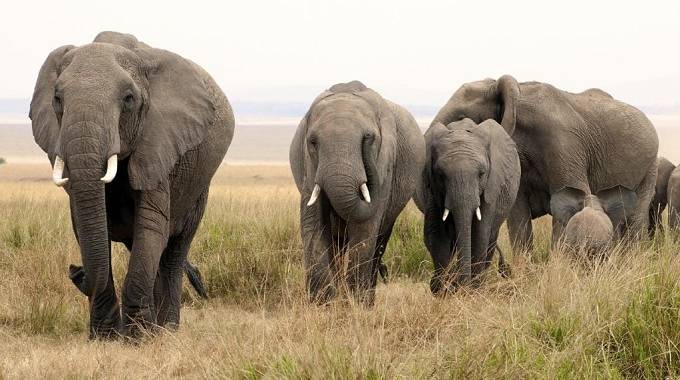
Nkosilathi Sibanda
TOURIST activity in the country is heavily present in rural communities that are at the heart of natural conservancies.
A heated discussion has arisen about how such communities can benefit from the income generated by the industry.
Human settlements in areas such as Gwayi, Tsholotsho, Hwange, Dete, Binga, Matobo and Save Valley are pertinent examples of how tourism, if managed well, can effect sustainable development, job creation and environmental protection.
These are areas that have an abundance of biodiversity that experts in conservancy and tourism believe must be incentivised for living in harmony with nature.
Communities suffer drought, water shortages, overgrazing, livestock diseases and human-wildlife conflict, which in combination, has made conventional livelihoods less viable. This has led to increased pressure on natural resources and diminished support for conservation initiatives.
Although limited funds are channeled to motivate communities that live near national parks and conservancies, it is known that giving a ‘pat back’ to people who live in these areas brings about development.
There are villagers that have benefited immensely from the Communal Areas Management Programme for Indigenous Resources (CAMPFIRE) through sale of wildlife but the outcry for development is still loud.
Although there are pockets of mismanagement in some areas, elsewhere communities seem to be benefiting from tourism activity.
In Chirinda Forest in Chipinge, communities tell stories of how they have benefitted from eco-tourism projects in that jungle.
Biodiversity expert, Dr Chipangura Chirara revealed that Chirinda Forest was one of the most unique eco-tourism sites in the country and there were some rare species that could only be found at that forest.
“This is an example that eco-tourism and biodiversity can really work. People come from all over the world to this very forest to participate in various activities that include bird watching and further you can clearly see how the community works to preserve this forest because you find there are some rare species that are only found here,” the environmental expert said.
In Hwange National Park, numerous humanitarian initiatives are under reported where private players in the tourism industry are building schools, clinics and offer free medical check-ups to villagers.
These are examples that have to be emulated in areas where nothing spills to the benefit of communities.
Recently, a report by the United Nations Environment Programme said in Africa, governments are scaling down on honouring communities in protected areas because of limited budgets.
“To preserve their wildlife and wild places, governments should look at protected areas not only as environmental assets but economic ones as well, with the continent’s 8 400 protected areas producing US$48 billion in revenue.
“Africa’s unique diversity of wildlife and habitat has the potential to radically transform the continent’s economy. Yet, at present, few of Africa’s protected areas are meeting their potential as engines for tourism growth and are underfunded by up to ten times the required level,” read the report.
Players in the tourism sector said a lot is to be done to ensure that communities derive benefits from the industry.
Mr Langton Masunda, chairman of the Gwayi-Dete-Hwange Conservancy is of the view that nature-based tourism could improve the livelihoods of many people as it generates employment and provides greater opportunities for women than other sectors.
He said it does not bode well that villagers lose hectares of plantations to stray wildlife.
“Wildlife is terrorising villagers and farming activities have stopped because there is no point of ploughing and planting only to lose everything to elephants in a day. Lions prey on livestock. We have cases where farmers lose five cattle per night and they bear the brunt of recovering losses alone. When tourists come to watch these lions, no one considers the plight of the farmers.
“It is our view that communities have to be compensated, be given incentives for conserving wildlife. In particular, they must be honoured for living in harmony with nature under difficult circumstances. They are custodians of the wildlife. If this is done, then we would have started the road to sustainably conserve our wildlife and promote tourism that develops communities.”
Mr Masunda said it is time that relevant authorities consider the value that sustainable tourism has on communities.
“This creates jobs for the local community, and it brings visitors to the national parks, creating money for wildlife services that often have limited budgets,” he said.
Mr Kenneth Ndlovu, a farmer in Dibutibu Village, Jambezi, an area that has a CAMPFIRE project said while they appreciate the programme, they are yet to get full benefits as farmers.
“There are a lot of issues that we do not understand. We need schools, protection from wildlife and even to be compensated for losses when lions kill our cows and hyenas raid our goats,” he said.
According to data gathered from CAMPFIRE, in 2008, the village of Sizinda under the CAMPFIRE wildlife conservancy received 100 buffaloes from Victoria Falls National Park. Out of this, it is envisaged that the community will benefit.
Mr Masunda said the quotas derived from programmes such as CAMPFIRE are low.
“Recovery of lost livestock and property when wild animals have attacked is very low compared to the number of villagers affected. It is insignificant.”
Mr Phineas Chauke, a tourism consultant, marketer and tour guide said while tourism has a lot of benefits for countries, it has its setbacks which is why sustainable approaches are needed.
“Tourism management should take into account environmental stewardship,” he said.
The United Nations World Tourism Organisation Wildlife (UNWTO) says 80 percent of annual tourism activity in Africa is in wildlife watching. Zimbabwe ranks high with the highest number of diverse wildlife and vegetation.
Ms Doreen Robinson, wildlife expert at UN Environment in a report said it was important for governments to develop partnerships with private, community and non-profit organisations to realise the full capacity of nature-based tourism.
“Ultimately, this formula grows the economy, protects nature and supports human development.”
